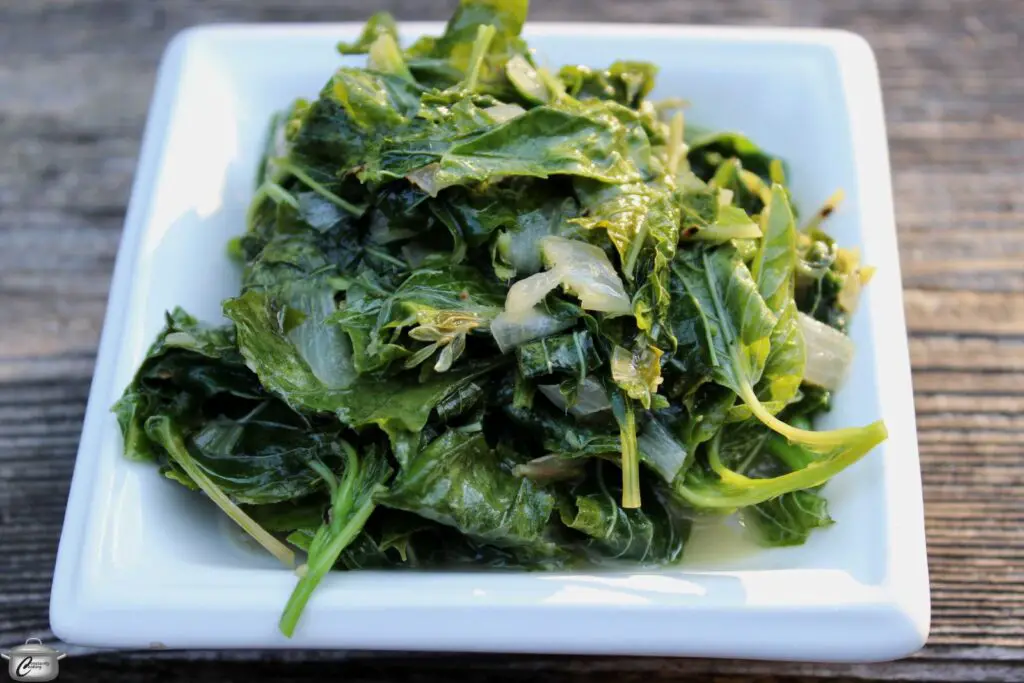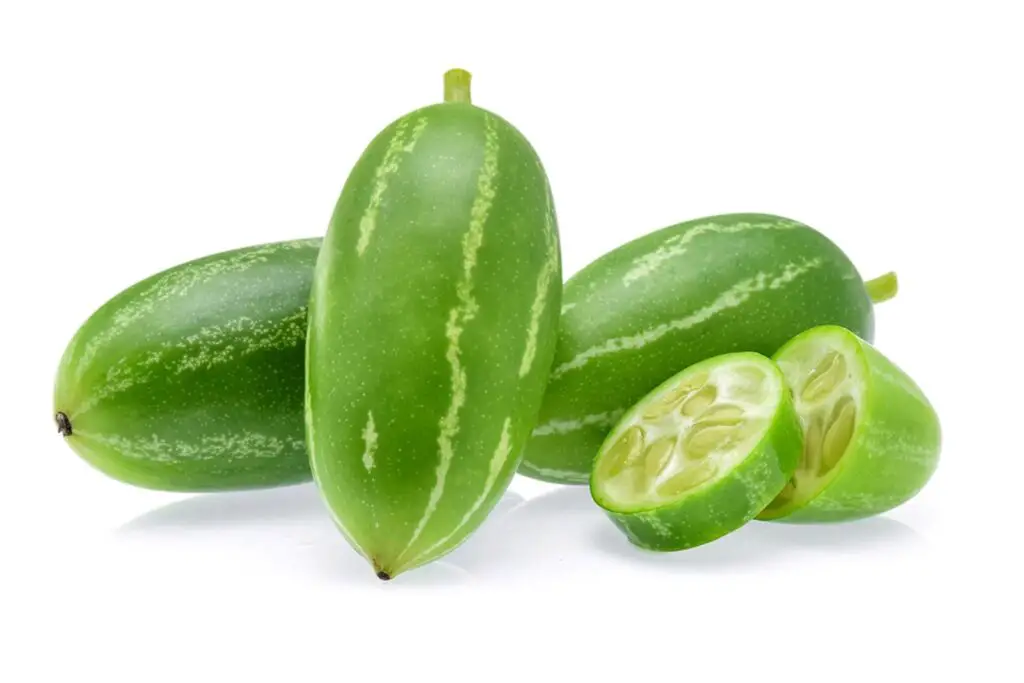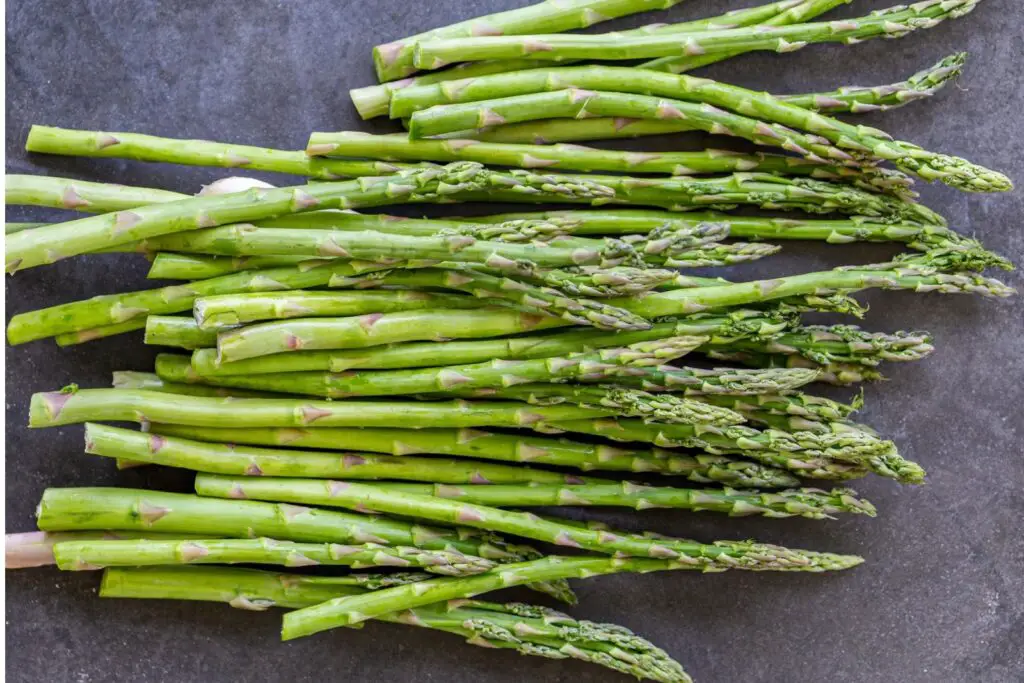
Garbanzo beans, also known as chickpeas, stand as a versatile and nutrient-rich legume that has earned its place in cuisines around the world. With their delicate nutty flavor and satisfying texture, garbanzo beans serve as a versatile ingredient in an array of dishes. From classic hummus and hearty stews to crunchy roasted snacks and colorful salads, these legumes offer a diverse range of culinary possibilities that cater to various tastes and dietary preferences. Packed with protein, fiber, vitamins, and minerals, garbanzo beans provide a wholesome addition to balanced diets. However, when preparing garbanzo beans in larger quantities or when aiming to extend their shelf life, it may be challenging to consume them all before they start to lose their freshness or texture.
Freezing garbanzo beans becomes a practical and efficient method to preserve their delightful taste and nutritional benefits, ensuring that each bean retains its nutty goodness and culinary potential, ready to elevate your meals with the essence of perfectly frozen garbanzo beans, even when fresh beans aren’t readily available or when you wish to enjoy this versatile legume at your convenience. In this guide, we will explore the best practices for freezing garbanzo beans, enabling you to savor the richness of these protein-packed gems and elevate your culinary repertoire with the essence of perfectly frozen garbanzo beans, without the need for constant preparations or frequent kitchen endeavors.
Here are the simple steps to freeze garbanzo beans:
Step 1: Choose High-Quality Garbanzo Beans
The first and crucial step in freezing garbanzo beans is to ensure you’re working with high-quality beans. This step sets the foundation for the overall success of the freezing process, as the freshness and quality of the beans will directly impact their taste and texture after thawing.
If you’re using canned garbanzo beans, it’s advisable to select brands that offer beans with minimal additives or preservatives. These additives can affect the taste and texture of the beans, especially after freezing and thawing. Reading the label on the can will help you identify the contents and make an informed decision about the quality of the beans.
On the other hand, if you’re working with dried garbanzo beans, a bit more preparation is required. Before cooking, sort through the beans to remove any debris, damaged beans, or foreign particles that might have found their way into the packaging. This step is important to ensure that only clean and intact beans are used in the freezing process.
Rinsing the dried beans thoroughly under cold water is the next crucial step. This not only removes any remaining debris but also helps to eliminate excess starch that might cause the water to become cloudy during cooking. Rinsing also aids in reducing the chances of digestive discomfort that can sometimes be associated with legumes.
After sorting and rinsing, it’s recommended to soak the dried beans in water for several hours or overnight. Soaking helps to soften the beans and reduce their cooking time. Drain and rinse the beans once again before proceeding with the cooking process.
Step 2: Cook and Cool the Beans
After you’ve chosen high-quality garbanzo beans and prepared them by sorting, rinsing, and soaking if necessary, the next step is to cook the beans. Cooking garbanzo beans thoroughly not only enhances their flavor but also ensures that they are safe to consume after freezing.
There are several cooking methods you can choose from, based on your preference and available equipment. The most common methods include boiling, pressure cooking, and using a slow cooker.
- Boiling: In this method, place the soaked or rinsed beans in a pot and cover them with water. Bring the water to a boil and then reduce the heat to a simmer. Allow the beans to cook gently until they reach the desired tenderness. This usually takes around 1 to 1.5 hours, depending on the size and freshness of the beans.
- Pressure cooking: Using a pressure cooker is a faster way to cook garbanzo beans. Place the beans in the pressure cooker along with the required amount of water. Follow the manufacturer’s instructions for pressure cooking legumes. Typically, garbanzo beans take about 20-25 minutes to cook under pressure.
- Slow cooker: If you prefer a hands-off approach, a slow cooker can be used to cook the beans. Combine the beans with water in the slow cooker and set it to cook on low for 6-8 hours, or on high for 3-4 hours, until the beans are tender.
After draining, allow the cooked beans to cool completely before proceeding. Cooling is vital to prevent condensation inside the storage containers, which can lead to freezer burn or loss of quality. You can spread the beans on a baking sheet to speed up the cooling process.
Step 3: Portion the Beans
As you progress through the process of freezing garbanzo beans, it’s important to consider how you plan to use them in your future cooking endeavors. This step involves dividing the cooked and cooled garbanzo beans into manageable portions that align with your typical recipe requirements. By doing so, you can avoid thawing a larger batch than necessary and ensure minimal food waste.
Here’s a breakdown of the portioning process and its significance:
- Future Usage Planning: Before dividing the garbanzo beans, take a moment to think about the dishes you frequently prepare or those you intend to create in the coming months. Consider the amount of beans required for each recipe. Whether you’re making hummus, salads, stews, or curries, having a clear understanding of your usage patterns will guide your portioning decisions.
- Convenient Sizes: Based on your usage plans, divide the garbanzo beans into portions that are practical and convenient for your recipes. Smaller portions are advisable for recipes that require a relatively small quantity of beans, while larger portions might suit dishes that are bean-intensive.
- Portioning Methods: You can use various containers or bags to hold the portions. Some options include airtight containers, resealable freezer bags, or even ice cube trays for very small portions. Remember to leave some space at the top of the containers or bags to accommodate expansion during freezing.
- Reducing Waste: Portioning the garbanzo beans effectively can significantly reduce food waste. When you thaw only what you need for a particular recipe, you minimize the chances of unused beans going to waste.
- Convenience: The beauty of portioning lies in its convenience. When a recipe calls for garbanzo beans, you can easily grab the required portion from the freezer without having to thaw an entire batch. This saves time and energy during meal preparation.
Step 4: Pack the Beans for Freezing
After you’ve portioned the garbanzo beans based on your future recipe needs, the next step is to properly pack them for freezing. This step is critical in maintaining the quality, flavor, and texture of the beans throughout their time in the freezer. Proper packaging prevents freezer burn and helps the beans retain their freshness for an extended period. Here’s how to effectively pack the garbanzo beans for freezing:
- Use Airtight Containers or Freezer Bags: Select either airtight containers or heavy-duty freezer bags to hold the portioned garbanzo beans. Airtight containers prevent air and moisture from entering, preserving the beans’ quality. Freezer bags are a convenient option, but make sure to choose bags specifically designed for freezing.
- Cool the Beans Completely: Before packing, ensure that the garbanzo beans are completely cooled. Hot or warm beans can release moisture into the packaging, leading to freezer burn or ice crystals.
- Load the Containers or Bags: Carefully place the cooled garbanzo beans into the chosen containers or bags. Leave some space at the top to accommodate expansion during freezing. As liquids freeze, they expand, and having enough headspace prevents containers or bags from bursting.
- Removing Air from Bags: If using freezer bags, remove as much air as possible before sealing. You can achieve this by gently pressing the bag to squeeze out excess air as you seal it. This step is crucial to minimize the potential for freezer burn, which occurs when air comes into contact with the food.
- Sealing Properly: Whether using containers or bags, ensure a secure and tight seal to prevent air and moisture from entering. Double-check that lids are properly closed or that bags are sealed along the entire length.
- Stacking and Storing: Arrange the packed garbanzo beans in a way that maximizes freezer space. If using bags, you can lay them flat initially to allow for quicker freezing. Once frozen solid, you can stack them for efficient storage.
Step 5: Seal and Label
As you near the final stages of the garbanzo bean freezing process, it’s important to take a moment to seal the containers or bags securely and provide them with proper labeling. This step might seem straightforward, but it plays a critical role in maintaining the quality of your frozen garbanzo beans and ensuring an organized freezer. Here’s why sealing and labeling are essential:
- Secure Sealing: Whether you’re using airtight containers or freezer bags, ensure that they are sealed tightly. This prevents air and moisture from entering, which can lead to freezer burn and compromise the beans’ quality over time. Double-check each container’s lid or bag’s seal to confirm they are properly closed.
- Date of Freezing: Label each container or bag with the date of freezing. This small piece of information is invaluable for tracking the beans’ freshness. Over time, you might accumulate different batches of frozen garbanzo beans, and knowing when each batch was frozen helps you prioritize using the oldest beans first.
- Rotation of Inventory: The “first in, first out” principle applies here. By using the oldest beans before the newer ones, you’re ensuring that your meals are made with the beans that have been stored the longest. This rotation practice helps you minimize food waste and make the most of your frozen garbanzo beans.
- Avoid Confusion: A well-labeled package eliminates any guesswork when you’re searching for a specific portion of garbanzo beans in the freezer. Instead of opening multiple containers or bags to identify their contents, clear labeling lets you quickly find what you need.
- Easy Meal Planning: When you’re planning meals or creating grocery lists, having labeled packages streamlines the process. You can easily see the quantity and date of your frozen beans, making it convenient to factor them into your cooking plans.
- Organization and Efficiency: Properly labeled packages contribute to an organized freezer. This organization not only makes it easier to find what you’re looking for but also prevents the need to rummage through the freezer and disturb other items each time you’re cooking with garbanzo beans.
Step 6: Freeze the Beans
As you move forward in the process of freezing garbanzo beans, the actual freezing step is pivotal in preserving the beans’ quality and preventing the formation of ice crystals. Proper freezing techniques contribute to maintaining the beans’ texture and taste, ensuring they’re ready to enhance your future culinary creations. Here’s why and how to freeze the beans effectively:
- Initial Single-Layer Freezing: After securely packing the portioned garbanzo beans in airtight containers or freezer bags, the next step is to place them in the freezer. To promote faster and more even freezing, arrange the containers or bags in a single layer on a flat surface or freezer shelf. This allows the cold air to circulate around the beans, resulting in quicker freezing.
- Preventing Clumping: Freezing beans in a single layer helps prevent them from clumping together. Clumped beans are prone to freezer burn and can become difficult to separate when you need to use a specific portion. By initially spreading them out, you’re ensuring that each bean freezes individually.
- Faster Freezing: Quicker freezing is advantageous because it minimizes the formation of large ice crystals. These crystals can compromise the texture of the beans when they thaw, potentially leading to a mushy consistency. Rapid freezing helps maintain the beans’ integrity and keeps them as close to their fresh state as possible.
- Space-Saving Approach: Once the garbanzo beans are frozen solid, usually after a few hours, you can rearrange them for efficient storage. Move the containers or bags closer together or stack them to make the most of the freezer space. At this stage, the beans are already individually frozen, so clumping is less of a concern.
- Maintaining Quality: Proper freezing methods contribute to maintaining the beans’ quality over an extended period. By freezing them quickly and individually, you’re reducing the risk of freezer burn, which can occur when moisture on the surface of the beans evaporates and then recondenses as ice.
- Optimal Storage: Well-frozen beans are easier to handle and less likely to stick together. This makes it simpler to retrieve the desired portion from the freezer without thawing more than necessary. It also means you can continue to store other items in your freezer without worrying about beans taking up excessive space.
How long garbanzo beans can last in the freezer?
Garbanzo beans can last in the freezer for up to 6-8 months. Properly packaged and stored at 0°F (-18°C), they maintain quality. Thaw slowly in the refrigerator for optimal use.
Step 7: Thaw the Frozen Garbanzo beans
As you approach the culinary stage of using your frozen garbanzo beans, it’s essential to follow proper thawing practices to ensure that the beans retain their texture, flavor, and nutritional value. Thawing them gently and without rushing contributes to a successful cooking experience. Here’s how to thaw and use your frozen garbanzo beans effectively:
- Planning Ahead: Before you’re ready to use the frozen beans, it’s best to plan ahead. Choose the portion you need and determine the recipe you’ll be preparing. This step allows you to thaw only what you’ll use, minimizing waste.
- Refrigerator Thawing: The recommended method for thawing frozen garbanzo beans is in the refrigerator. Place the portioned beans in a container and transfer them to the refrigerator the night before you intend to use them. Let them thaw slowly and evenly over time.
- Avoid Quick Thawing: While it might be tempting to speed up the process by using a microwave or warm water, it’s best to avoid these methods. Quick thawing can lead to uneven thawing and potentially compromise the beans’ texture.
- Thawing Time: Garbanzo beans typically take about 8-12 hours to thaw in the refrigerator. This slow and controlled thawing helps maintain their integrity and prevents them from becoming overly soft or mushy.
- Avoid Thawing and Refreezing: Once the beans are thawed, it’s advisable to use them promptly. Avoid thawing and then refreezing the beans, as this can lead to changes in texture and taste. If you thaw more beans than you need, consider using them in a series of dishes over a short period.
Other related questions
Can you refreeze garbanzo beans?
Refreezing garbanzo beans is generally discouraged. Thawed beans may experience texture and flavor changes, impacting quality. It’s advisable to use thawed beans promptly to avoid deterioration.
How do I know if the garbanzo beans have gone bad after being frozen?
Inspect for signs of freezer burn, like dryness and discoloration, which can affect quality. Off-putting odors or changes in flavor suggest spoilage. Trust your senses and discard beans showing such indicators.
Are there differences in freezing garbanzo beans for soups vs. salads?
Freezing garbanzo beans for soups and salads involves considerations. For soups, fully cook and cool beans before freezing in airtight containers, accounting for expansion. For salads, blanch, cool, and freeze beans in portion-sized bags for easy usage, maintaining texture and flavor.
Can I freeze garbanzo bean hummus or dip?
Yes, you can freeze garbanzo bean hummus or dip, but certain steps are crucial. Transfer to airtight containers, leaving some space for expansion. Thaw in the refrigerator and stir to regain consistency; texture might slightly change, so re-blending could be needed for optimal quality.
Should I remove the outer skins before freezing garbanzo beans?
Removing outer skins before freezing garbanzo beans is optional. Skins can slightly toughen during freezing but don’t require removal. Consider personal preference and usage; peeled beans might be preferable for smoother-textured dishes like hummus, while leaving skins intact is simpler for freezing whole beans.








